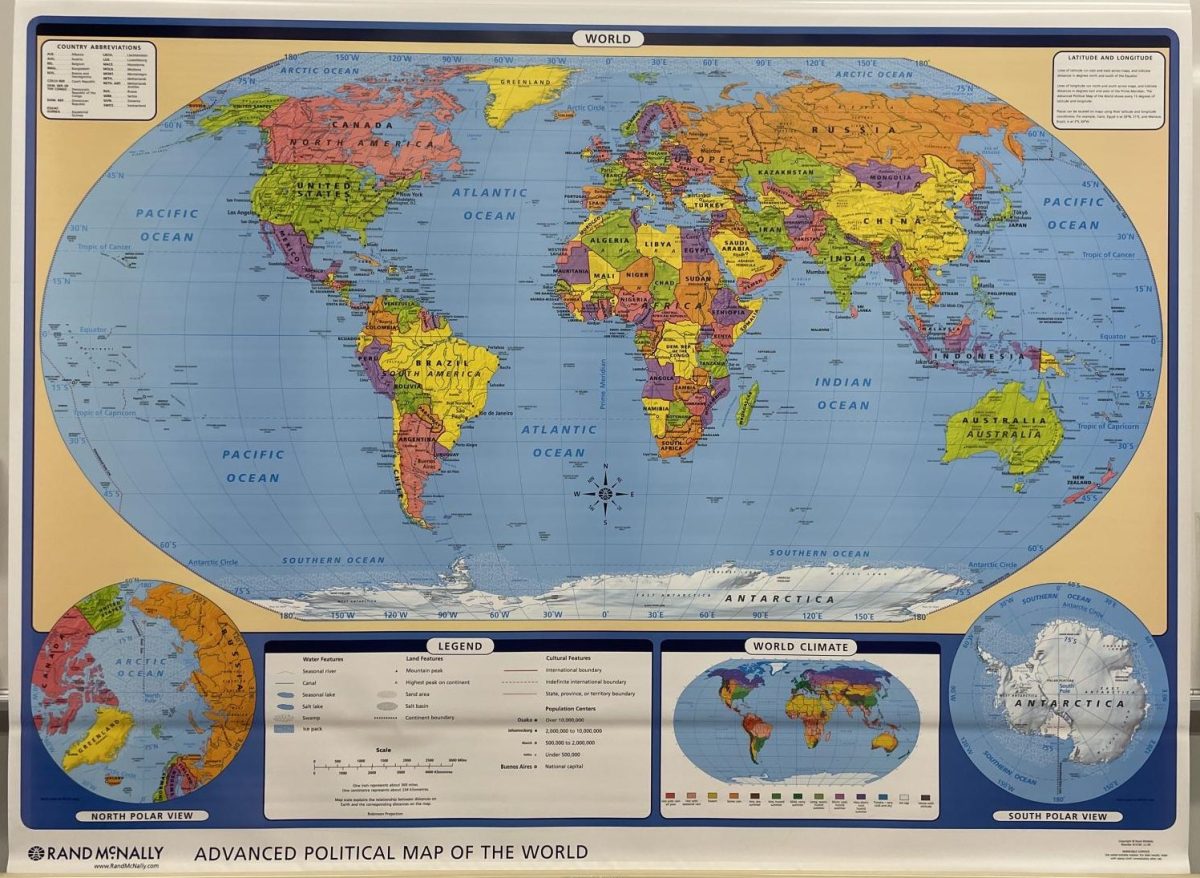If you were to show an alien a picture of Asia and Europe, give them a definition of what a continent is (to the extent that there is even a definition) and explain away Greenland and other abnormalities, then ask them how many continents they’re looking at- they would understandably be puzzled as to why we even have continental distinctions, but eventually would say one. You would get the same result if you showed them a picture of North and South America. In this hypothetical, aliens would be weirded out by why we even group land masses, but would come to the conclusion that there are most definitely not seven continents. So, why do we earthlings reject this truth?
How did we get here? A very European history…
In the fifth century B.C.E., “the father of history,” Herodotus, began to question the three-continent scheme Greek mariners devised. He especially took issue with Asia and Africa’s dividing line being the Nile River. He argued that, since Africa, Asia and Europe were all contiguous, there is no reason why they should be seen as distinct, especially not due to a river.
During the Roman Empire, continents were used mostly in scholarly settings, and the distinction between Europe and Asia was used merely to refer to the north or east side of the empire.In the middle ages, the tri-continental model remained, which bore the Isidoran or T-O map.This map reflected the religious fervor of the day: The continents were placed in the T/ “cross” with Jerusalem in the middle. Europeans took their desired result of three continents being divided by Jesus, and imposed that viewpoint on the world.
As Europe entered the Renaissance era, some actually began to question how continents were divided up. Newly valued humanist scholars started to search for a non-secular way to categorize continents. However, since the Renaissance period wasn’t all that unique from the Middle Ages and religion was still quite important, Christianity was still definitely used in the grouping of continents.
With the “Age of Reason”, alongside historical events like the Baltic states widely converting to Christianity, the lines of where Asia stops and Europe begins to be based heavily off of where Christianity was practiced. Throughout the fifteenth century and beyond, Western Christians adopted calling themselves European. This trend was exacerbated with the split between Orthodox and Western Christianity growing, as well as the Turkish/Ottoman conquests continuing.
For Europeans, it was pretty much settled that there were three continents; that was until the “New World” was “discovered”. Despite this “new” land being “discovered”, the Europeans did not widely accept it to even be a continent until the 16th century. Today, most people, outside of the United States and Canada, believe that North and South America are not distinct continents, rather they are hosted on one continent: America. Therefore, the majority of countries besides the U.S. and Canada believe there are six continents- but still why? If they can see North and South America have no real distinction, why can’t we see the same for Europe and Asia? And that’s not even bringing up the question of where Europe, Asia and Africa should be separated, or why.

Modern conceptions of continents
As early as the 1500s, it became clear that Europe and Asia were not divided by a substantial body of water. The Sea of Azov was much smaller than previously thought, and the Don wasn’t anywhere near the Arctic Sea. Despite the markings that previously separated Asia and Europe turning out to be totally unremarkable, European geographers did not stop to ponder if there should even be a distinction between the continents. Instead, they just came up with new ones. In the midst of Peter the Great’s Westernization of Russia, Vasily Tatishchev, the founder of Russian historical science, a geographer and statesman, lobbied to accept the Ural Mountains as the dividing line between Europe and Asia. Despite this making Russia a part of two continents, Peter accepted because Russia could “double dip” by being seen as European while simultaneously being able to justify the exploitation of the Siberian region since it is considered to be in, from their view, barbasic Asia. With strategic marketing, the belief that Asia begins at the foothills of the Ural Mountains took hold across Europe and Asia. Still, the obvious problem persisted- the Ural Mountains did not extend far West or South enough to constitute a total border. So, they had to hodgepodge other arbitrary boundaries together in order to form a full border. This same issue exists for Türkiye, Azerbaijan, Georgia and other “inbetweener” countries. Unfortunately, this history is extremely “Euro”-centric, and so is how we view the world (Africa constantly being shrunk on map projections, while Europe is supersized; the Levant being called the middle east, ect.).
Who cares?
It is so satisfying to be able to put things in our chaotic world into neat little categories, even if doing so requires stripping away any and all nuance. In the realm of continents, these made up categories prohibit regular people and world leaders alike from being able to work together. The instinct to want to group things together must be tempered and we need to learn to realize that things are not always going to fit together… and that that is actually ok. Not only is it ok, it should be embraced. It would be so freeing if we could realize there is room for deviation from the stupid boxes we confine ourselves by.










Steven Cullen • Dec 20, 2024 at 10:58 am
There are geological continents, but their number and boundaries differ from the geological ones. Their limits are continental shelves and plate boundaries, not sea coasts. Madagascar and India are thus considered continents, but Iceland is part of the sea floor thrust upwards. Greenland is part of North America but that continent”s boundary with Asia is west of the Bering Strait. New Zealand is part of a mostly underwater continent named Zealandia. Europe is mostly the same geographically and geological.